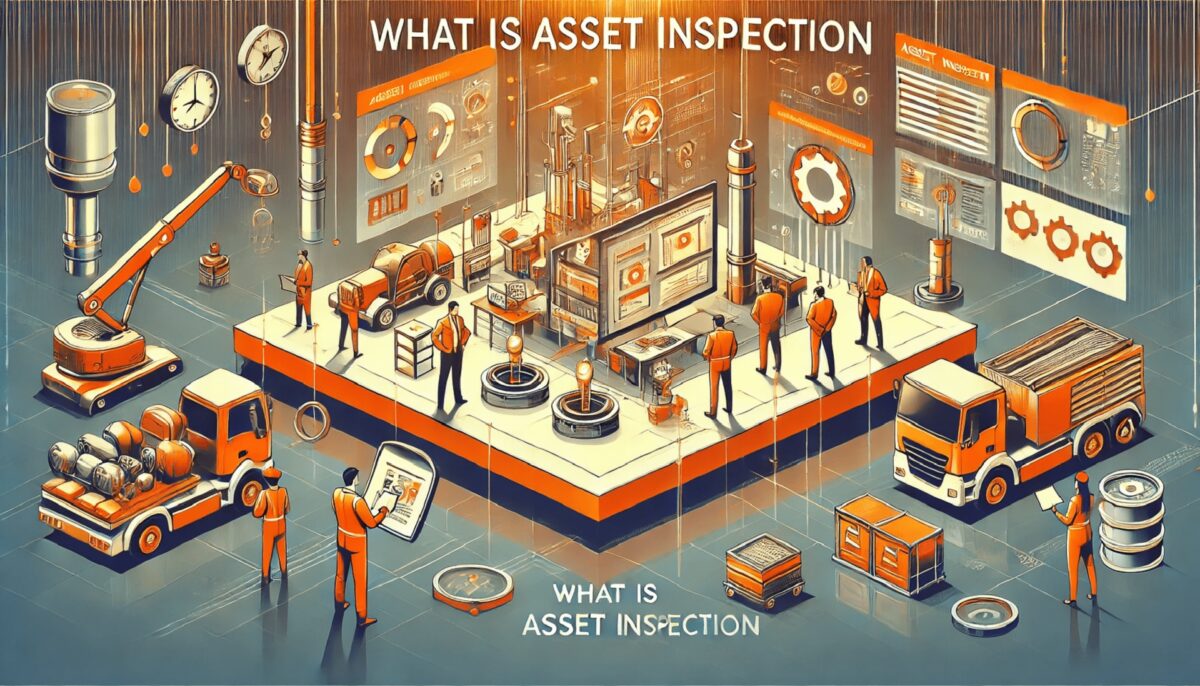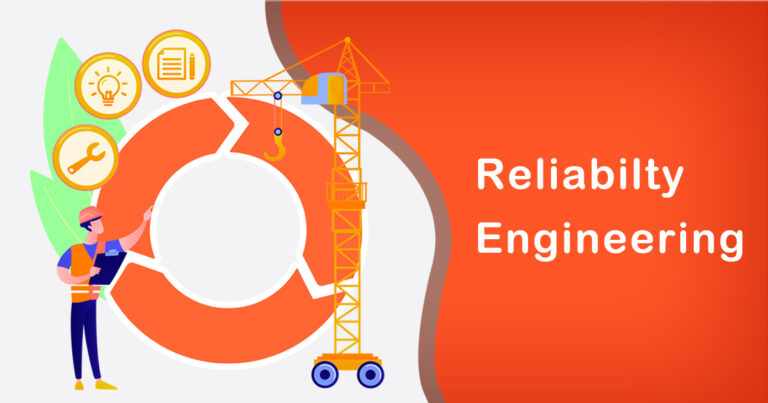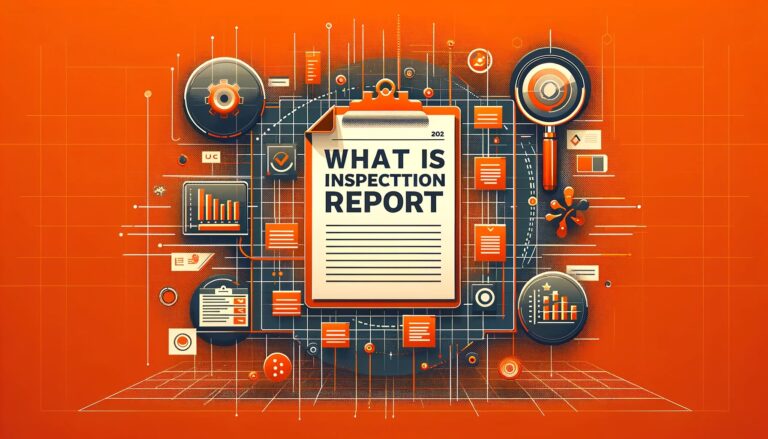Introduction
Asset inspection is a critical part of asset management, which involves regularly assessing physical assets to ensure they are in optimal condition. The process aims to identify any defects, wear and tear, or signs of failure in assets such as machinery, infrastructure, buildings, and equipment. In industries such as manufacturing, energy, and transportation, asset inspection helps avoid unexpected downtimes, improves operational efficiency, and ensures compliance with safety regulations.
In India, asset inspection is gaining importance due to the rapid industrialization and infrastructure development that demand efficient maintenance strategies. This blog will explore everything you need to know about asset inspection, including its importance, methods, technological advancements, regulatory requirements, and its relevance to the Indian economy.
Importance of Asset Inspection
Prevention of Downtime
In industries where asset performance directly impacts productivity, such as manufacturing and power generation, unplanned downtime can result in massive financial losses. Regular inspections help detect potential issues early, allowing for repairs or replacements before they escalate into major problems. For example, in the Indian automotive sector, asset downtime during assembly line operations could cost crores of rupees due to production delays.
Cost Optimization
Asset inspections enable companies to avoid costly repairs by addressing minor issues before they escalate. They also ensure that machinery and equipment are functioning at optimal levels, reducing energy consumption and preventing excessive wear and tear. For instance, a well-maintained boiler in an Indian textile factory can save up to 20% on energy costs annually.
Regulatory Compliance
Many industries in India are governed by strict regulatory standards related to health, safety, and environmental impact. Failing to inspect assets can lead to non-compliance with regulations like the Factories Act, 1948, and the Indian Boiler Regulations (IBR), leading to heavy penalties or operational shutdowns. Asset inspection ensures adherence to these regulations, reducing legal and financial risks.
Safety Assurance
In sectors such as oil and gas, power plants, and chemical manufacturing, asset inspection is crucial for ensuring the safety of both workers and the environment. A neglected pipeline, for instance, could lead to leaks, fires, or explosions, causing injuries, fatalities, and environmental damage. Regular inspections safeguard against such accidents, ensuring a safer work environment.
Prolonging Asset Life
Regular inspections help in extending the life of critical assets. Assets such as bridges, roads, and machinery can last longer when properly maintained. In India, where infrastructure projects are vital for economic growth, extending the life of public assets through inspections can reduce the need for frequent costly replacements or upgrades.
Methods of Asset Inspection
Visual Inspection
One of the most common methods, visual inspection involves a trained inspector examining the asset for visible signs of damage, wear, or malfunction. This method is effective for detecting surface-level issues such as cracks, rust, and deformation. For example, visual inspection is regularly performed in India’s railway sector to ensure the safety and integrity of tracks and rolling stock.
Nondestructive Testing (NDT)
NDT methods such as ultrasonic testing, magnetic particle testing, and radiographic inspection are widely used in industries like aerospace, oil and gas, and construction. These methods allow for the detection of internal defects without causing any damage to the asset. NDT is essential in India’s oil pipeline inspections to prevent leaks and environmental damage.
Condition Monitoring
This method involves continuously monitoring asset performance using sensors and diagnostic tools to detect any deviations from normal operation. Technologies like vibration analysis, thermography, and oil analysis fall under condition monitoring. In power plants across India, for example, condition monitoring helps in early detection of turbine failures, preventing catastrophic breakdowns.
Drone Inspections
Drone technology has revolutionized asset inspection, especially for assets in hard-to-reach or hazardous locations like wind turbines, transmission towers, and large construction sites. In India, where renewable energy is a growing sector, drones are increasingly used to inspect solar panels and wind farms efficiently.
Robotic Inspection
For underwater or confined space inspections, robots are employed to assess the condition of assets without exposing human workers to danger. In India, this technology is gaining momentum in industries like oil and gas, where robotic crawlers inspect pipelines, reducing downtime and improving safety.
Technological Advancements in Asset Inspection
IoT and Smart Sensors
The Internet of Things (IoT) plays a significant role in modern asset inspection. Smart sensors embedded in assets continuously gather data on performance, temperature, pressure, and vibration. In India’s water utilities sector, IoT is used to monitor water pipelines for leaks and bursts, minimizing water loss and ensuring consistent supply to urban areas.
Artificial Intelligence (AI) and Machine Learning (ML)
AI and ML are used to analyze inspection data and predict potential asset failures before they occur. Predictive maintenance algorithms are becoming popular in India’s industrial sector to anticipate breakdowns and schedule maintenance activities accordingly. For instance, AI-powered systems help Indian railway operators schedule maintenance of critical components like wheels and brakes, improving reliability and safety.
Augmented Reality (AR) and Virtual Reality (VR)
AR and VR technologies are used for training inspectors and assisting them during the inspection process. By overlaying digital information on real-world assets, inspectors can easily identify problem areas. In India, AR is being explored in the construction industry to improve the inspection of complex infrastructure projects.
Cloud-Based Inspection Platforms
Cloud-based platforms enable real-time data collection, analysis, and sharing of inspection results across teams. These platforms allow organizations to maintain a digital inspection history, which is crucial for regulatory compliance and performance tracking. Indian asset management companies are increasingly adopting these platforms to streamline inspection processes across multiple sites.
Asset Inspection in the Indian Context
India’s rapid industrial growth and infrastructure expansion have made asset inspection more critical than ever. The Indian government’s ambitious projects, such as ‘Make in India,’ and large-scale infrastructure developments like highways, ports, and smart cities, rely heavily on asset management and inspection to ensure sustainability and safety.
Industrial Inspections
In sectors like manufacturing, steel, and mining, asset inspection plays a pivotal role in minimizing production downtimes and ensuring worker safety. For instance, steel plants in Jharkhand and Odisha conduct routine inspections of furnaces and cranes to avoid costly breakdowns. Similarly, mining companies in Goa and Karnataka conduct frequent inspections of machinery to prevent operational failures.
Infrastructure Inspections
India’s vast and aging infrastructure, including bridges, dams, and roads, requires continuous monitoring to prevent catastrophic failures. In recent years, several bridge collapses have underscored the importance of regular inspections. The Indian government has been pushing for advanced inspection techniques, such as drones and NDT, to ensure the safety of critical infrastructure.
Regulatory Framework
The Indian regulatory landscape mandates asset inspections in various sectors. Key regulations include:
- The Factories Act, 1948: Ensures safety measures are in place for equipment and machinery used in factories.
- Indian Boiler Regulations (IBR): Mandates regular inspection of boilers to prevent accidents.
- The Petroleum Rules, 2002: Enforces inspection of pipelines, tanks, and safety systems in the oil and gas sector.
Indian companies are increasingly adopting global standards like ISO 55000 (Asset Management) to enhance their inspection processes.
Challenges in Asset Inspection in India
Despite the growing importance of asset inspection, several challenges persist in the Indian context:
Lack of Skilled Inspectors
India faces a shortage of trained inspectors, particularly in specialized fields like NDT and drone inspections. The government and private organizations are working to address this skills gap through training programs and certifications.
Aging Infrastructure
A significant portion of India’s infrastructure is aging, and many assets have surpassed their intended operational lifespan. This makes inspection and maintenance more challenging, as repairs are often delayed due to budget constraints.
Budget Constraints
Public sector organizations, particularly in municipalities and smaller industries, often face budgetary constraints that limit the frequency and scope of asset inspections. This can result in delayed repairs and, in extreme cases, asset failures.
Future of Asset Inspection in India
As India continues to grow economically, the demand for efficient asset management and inspection practices will rise. With technological advancements like AI, IoT, and robotics becoming more accessible, Indian industries are poised to improve their inspection processes.
The Indian government’s focus on modernizing infrastructure, combined with the increasing adoption of Industry 4.0 practices, will likely lead to a greater emphasis on predictive maintenance and automated inspections. Initiatives like the National Infrastructure Pipeline (NIP) and Smart Cities Mission will drive demand for cutting-edge inspection technologies in the coming years.
Conclusion
Asset inspection is a vital component of effective asset management, helping industries maintain operational efficiency, comply with regulations, and ensure safety. In India, where industrial growth and infrastructure development are accelerating, the importance of regular and advanced asset inspections cannot be overstated. By embracing new technologies and addressing the challenges unique to the Indian context, organizations can significantly improve asset reliability, reduce downtime, and optimize costs. Investing in robust asset inspection processes will not only help Indian industries avoid costly failures but also contribute to sustainable economic growth.








